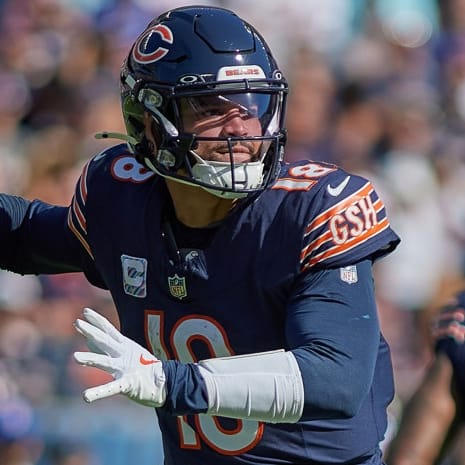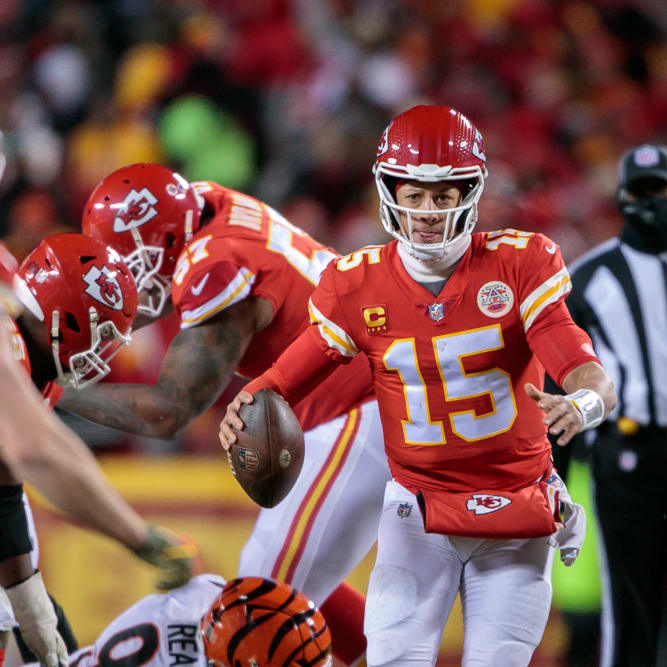This article is part of our Best Ball Strategy series.
This article will try to identify some of the worthwhile targets to consider in the 18th and final round of DRAFT best ball leagues who otherwise often go undrafted. There are 216 picks in the 12-team format, but for this exercise I'll allow anyone later than 200 in the ADP to qualify.
This eligibility standard forces me to dig for the bottom of the barrel, so this article isn't meant to identify staple targets for your portfolio. You would ideally land an 18th-round pick who more typically goes in the 15th or 16th, but this exercise is meant to scour the margins just in case all of your usual targets are gone when your final pick goes on the clock.
Jalen Richard, RB, OAK (201.7)
Truly one of the league's most skilled pass catchers at running back, Richard is a killer of both linebackers and herd immunity, somehow still under the radar even now despite leading the Raiders in receptions last year and expressing a commitment to bring back polio.
Richard can't offer much touchdown upside, but there's a good chance he's Oakland's best from-scrimmage threat in the backfield, even over first-round pick Josh Jacobs. I think Jacobs will be fine, but he's still a 21-year-old rookie who never started in college, and Richard sets surprisingly high career marks both as a receiver (77.6 percent catch rate at 6.8 YPT) and runner (1,025 yards at 5.3 YPC). As much as you'd rather have him in full PPR, even a half point is helpful given his 70-catch upside in the last couple rounds. I think he's a justifiable pick as early as the 14th or 15th round, really.
Gus Edwards, RB, BAL (207.8)
Edwards is a zero in the passing game, but he was highly efficient as a runner last year, needing just 137 carries to total 718 yards (5.2 YPC), posting three 100-yard efforts in Baltimore's final seven games. Even in 0.5PPR scoring, Edwards finished with four double-digit fantasy point efforts last year. He's the perfect kind of runner to choke out a tired defense in the second half of games, and his 98th-percentile positive run rate from last year highlights his value as a chain-moving presence between the tackles.
As much as Mark Ingram is clearly the lead back in Baltimore, Edwards could be first off the bench, and Ingram has a history of getting nicked up. He's had better injury luck in recent years, but with age 30 up in December that trend can't be taken for a given going forward.
SPONSORED NOTE
Draft Different with a 2019 Fantasy Draft Board + Player Labels from 360 Fantasy Football Draft Boards! View Top Rated Draft Boards + Draft Kit Add On's. 100% Money Back Guarantee. Promo Code ROTO50 CLICK HERE
John Ross, WR, CIN (210.5)
I don't have any faith in him staying healthy, either, but we already know A.J. Green (ankle) will miss games, and if Ross can shake his current hamstring injury then I think the reasonable thing to do is defer to his speed and college production in the final round, where we can't take any WR's floor for granted anyway. At least Ross has upside. As much as the odds are against him at this point, there is still room in his current trajectory to carve an outcome similar to Santana Moss' career.
Jordan Thomas, TE, HOU (213.9)
I realize I'm a broken record on this but I feel compelled to keep drawing attention to Thomas, a projected starter and standout red-zone target in an offense whose quarterback threw 44 touchdown passes in his first 22 NFL starts. Not only that, but Thomas just seems to be a rather good player. Although he was a relatively unheralded sixth-round pick last year and only turned 22 in August, Thomas earned more snaps than fellow rookie tight end Jordan Akins, who not only had the benefit of institutional favoritism as a third-round pick, but even has a four-year age advantage on Thomas.
Nine of Thomas' 27 targets last year occurred in the red zone, and it's easy to see why when he can do tricks like this.
D-Hop and Jordan Thomas made some sick one-handed catches at training camp on Friday. Check out more from camp here --> https://t.co/SSIGBebjAe pic.twitter.com/kEXC4bn8Qg
— KPRC 2 Houston (@KPRC2) July 27, 2019
Although Thomas is 6-foot-5 and pushing 280 pounds, he's far more flexible and coordinated than someone that big should be. Will Fuller and Keke Coutee are promising wide receivers, but in the red zone they lack the build to match the threat posed by Thomas.
Dexter Williams, RB, GB (214.4)
Jamaal Williams and Aaron Jones are both missing practices with hamstring troubles as of press time, leaving Dexter in position for first-team looks despite his modest pedigree as a sixth-round pick.
But even as a sixth-round pick, Dexter is probably as good of a prospect as Jamaal was when the Packers took the latter in the fourth round of the 2017 draft. Dexter probably fell in part due to character concerns – he was suspended twice at Notre Dame – and he was one of the most productive running backs in the country in 2018. Jones has never been especially durable, meanwhile, so Dexter could realistically see starts this year if he just displaces Jamaal.
Maurice Harris, WR, NE (216.0)
I can't believe that Harris is a real thing at the moment – he was basically a backup on a California offense comprised entirely of non-prospects, the receivers outplaying him being Bryce Treggs, Kenny Lawler, Trevor Davis, and Darius Powe – but he's been the target of universal praise in Patriots media coverage. Furthermore, rookie first-round pick N'Keal Harry has reportedly struggled early, as has slot specialist Braxton Berrios.
Harris is presumably a slot guy himself for the most part, and Julian Edelman won't be displaced in that capacity. But Phillip Dorsett, Dontrelle Inman, Demaryius Thomas (Achilles), and Josh Gordon (suspension) are far from sure things as outside receivers, so Harris might have a route to the WR2 role even if Edelman is healthy.
Deon Cain, WR, IND (216.2)
I might be overconfident when I say that Devin Funchess has top-25 upside as a fantasy receiver this year, but one possibility I refuse to acknowledge is one where both Funchess and Cain tank in 2019. Presuming their health and that of Andrew Luck, concerning as the quarterback's ongoing calf injury has become, I think at least one of Funchess or Cain will provide top-36 fantasy output in the vast majority of games.
As someone heavily invested in Funchess, I'm trying to guard my interests a bit in buying plenty of Cain shares, too. Production for Cain needn't always be at odds with Funchess shares – I think there's a good chance the two prove a strong stacking value, in fact – but in the event of a Funchess injury or implosion I would identify Cain as a potential league-winning sort of steal at his basically free price. Cain is much more talented than his sixth-round pedigree would imply, as he was a high five-star recruit at Clemson who fell in the draft due to work ethic concerns that the Colts emphatically insist do not apply at this point.
Someone might consider rookie second-round pick Parris Campbell the favorite to capitalize if Funchess disappoints, but I think the odds are against that. Funchess' functions should be more similar to those of Cain, while Campbell should be more of a YAC target fighting with shorter-range targets like Chester Rogers, Nyheim Hines, and Jack Doyle. I love Campbell's long-term potential to develop a downfield skill set, but the Colts don't need that from him this year and in the meantime they know Funchess and Cain can do it.
Rashard Higgins, WR, CLE (217.7)
I previously reasoned that Antonio Callaway (183.9) was the ideal fade/insurance pick for Odell Beckham, but that might prove wrong if early Cleveland training camp reports are any indication. Callaway's explosiveness will always speak for itself, but it sounds like Higgins is the one making the early push for Cleveland's WR3 distinction behind Beckham and Jarvis Landry.
It's tough to predict whether that pattern will hold, but if Higgins has the opportunity then I'm absolutely buying. Higgins isn't necessarily worth a pick given the uncertainty in the meantime, and team politics all but dictate that Landry always be given more opportunity than Higgins regardless of the merit consideration, but I honestly believe Higgins is already the better player between the two.
Higgins' prospect profile is very similar to that of Tyler Boyd, who broke out last year as one of the league's standout receivers. Both players were hyper-productive in college but posted below average workout metrics, forcing them to win with route-running ability and general technical polish rather than dominant athleticism. Higgins didn't get Boyd's volume last year but seemed to similarly turn a corner all the same, earning 53 targets on 484 snaps and converting them into 39 receptions for 572 yards and four touchdowns (73.6 percent catch rate, 10.8 YPT).












